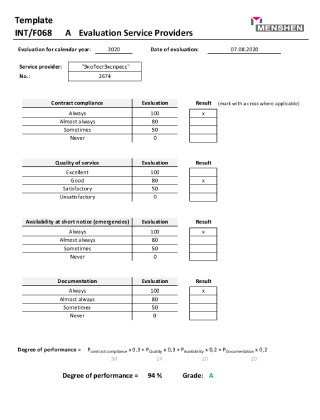- Master the Art of Catching Big Bass with Proven Techniques
- Understanding Bass Types and Habitats
- Essential Gear and Equipment for Bass Fishing
- Understanding Bass Behavior and Feeding Patterns
- Best Techniques for Catching Large Bass
- The Impact of Weather Conditions on Bass Fishing
- The Importance of Patience in Bass Fishing
- Conclusion
Master the Art of Catching Big Bass with Proven Techniques
Catching big bass is not just a hobby; it’s an art form that requires a deep understanding of both the fish and their environment. The term big bass splash evokes images of exhilarating fishing experiences, where the thrill of reeling in large bass leaves anglers feeling accomplished. To master the art of catching these elusive fish, one must grasp various techniques, tools, and strategies that make all the difference. With the right information and preparation, anyone can elevate their bass fishing game to the next level.
Every angler dreams of landing a hefty trophy bass, but achieving this goal requires more than luck. It demands patience, skill, and a willingness to learn. As one delves into the world of bass fishing, it becomes evident that understanding the behavior of bass is crucial. Are they deep or shallow? Are they feeding? These questions guide anglers to make informed decisions, leading to successful fishing trips.
Moreover, the right equipment can significantly impact your fishing success. From rods and reels to baits and lures, each component plays a vital role in the fishing process. Knowing which equipment matches your fishing style and the conditions you’re fishing in will improve your chances of attracting that big bass. In the following sections, we will explore various methodologies, tools, and best practices to enhance your fishing prowess.
As we navigate this comprehensive guide to bass fishing, remember that learning is an ongoing journey. Each fishing trip offers new experiences and lessons. So gear up, take notes, and prepare to unlock the secrets of catching big bass.
Let’s delve deeper into the essential aspects of mastering bass fishing, starting with understanding bass types and their habitats.
Understanding Bass Types and Habitats
Before embarking on any fishing adventure, it is essential to understand the species of bass available and their preferred habitats. Consisting primarily of the Largemouth Bass, Smallmouth Bass, and Spotted Bass, these species exhibit unique behaviors and habitat preferences. Largemouth Bass thrives in weedy, slow-moving waters, making them a favorite among anglers. Meanwhile, Smallmouth Bass prefers cold, fast-moving rivers and larger lakes, while Spotted Bass can be found hanging around structures or rocky areas.
Habitat is a critical factor influencing bass behavior. Different environments dictate feeding patterns and hiding spots. Lakes, rivers, ponds, and reservoirs all play host to these fish, and understanding them will benefit any angler. Here is a quick overview of the preferred habitats for each bass type:
| Largemouth Bass | Weedy and shallow areas of lakes and ponds |
| Smallmouth Bass | Cold, deep waters or fast-moving rivers |
| Spotted Bass | Structure around rocks or ledges in moving water |
In conclusion, knowing each species’ habitats can significantly boost your success rate in locating and catching bass. Selecting the appropriate fishing location based on these preferences is crucial as it influences strategy. Now, let’s explore essential gear and equipment to enhance your bass fishing experience.
Essential Gear and Equipment for Bass Fishing
Having the right fishing gear can make all the difference when it comes to catching big bass. The essentials include fishing rods, reels, lines, hooks, and lures. Each component should match the specific fishing tactics used during your outing. A medium to heavy-action rod is typically recommended for bass fishing, providing both the strength required for larger fish and the sensitivity to detect bites.
When it comes to reels, spinning and baitcasting reels are popular choices among anglers. Spinning reels offer versatility and ease of use, while baitcasting reels provide accuracy and control. Selecting the right line is also crucial; braided line is favored for its strength and responsiveness, while monofilament line offers great flexibility.
Moreover, the right bait and lures can significantly influence your success. Some popular choices include:
- Soft plastic worms
- Crankbaits
- Topwater lures
- Spinnerbaits
Each of these lure types has its own advantages, and selecting the best one depends on factors like water temperature and the bass’s mood. Ensure you have a diverse tackle box to adapt to varying situations and challenges.
Understanding Bass Behavior and Feeding Patterns
Bass behavior varies throughout the day, influenced by factors such as lighting, weather, and water temperature. Typically, bass are more active during early morning and late evening, known as the feeding windows. During these periods, bass are primarily focused on feeding, making them more likely to strike at lures.
Understanding foraging behaviors will increase your chances of catching bass. As ambush predators, bass often hide in cover like rocks, weeds, and fallen trees, waiting for prey to swim by. This characteristic is essential in determining where to cast your lure, as targeting these areas often yields the best results.
Knowing the seasons and how they affect feeding habits can also be beneficial. For example, during the spring spawn, bass are more aggressive and likely to strike at lures. In contrast, during the hot summer months, they may retreat to deeper waters, requiring a different fishing approach. Here is a brief outline of how bass behavior changes with the seasons:
- Spring: Aggressive due to spawning
- Summer: Retreat to cooler, deeper sections
- Fall: Active feeding before winter
- Winter: Less active, slow presentations needed
Being cognizant of these behavioral shifts empowers anglers to adapt their tactics, leading to greater success on the water. Next, let’s discuss the best fishing techniques for catching large bass.
Best Techniques for Catching Large Bass
While understanding bass habitats and behavior is essential, mastering effective fishing techniques can make all the difference in your success. A variety of techniques exist, but some are particularly successful when targeting large bass. Techniques such as flipping, pitching, and topwater fishing are popular among experienced anglers.
Flipping is a precise technique used to catch bass hiding in thick cover. By using a short accurate cast with heavy weights—often less than 1/2 ounce—anglers can present their lures in tight spaces. This technique requires finesse and skill, but the rewards can be immense.
Pitching, much like flipping, involves presenting lures to an area where bass may be hiding but is a more casual cast. It allows for longer distances and can cover more water. Topwater fishing is another thrilling technique, often yielding explosive strikes from bass. This method works particularly well during morning and evening hours.
| Flipping | Precise presentation in cover for aggressive bass |
| Pitching | Longer casting for covering varied water areas |
| Topwater Fishing | Uses surface lures to attract bass with explosive strikes |
Choosing the best technique often depends on the specific conditions of your fishing environment. Adapting your approach based on what works best will yield the most significant results. Now let’s take a look at the impact of weather conditions on bass fishing.
The Impact of Weather Conditions on Bass Fishing
Weather plays a pivotal role in fishing conditions, with certain factors significantly influencing bass behavior. Temperature, cloud cover, wind, and precipitation can all affect where and how bass are biting. For instance, bass are more active during overcast days compared to bright sunny ones since they feel secure in low light conditions.
Rainfall can also be beneficial, as it often encourages bass to become more aggressive due to increased feeding opportunities. Moreover, a slight increase in water temperature can trigger feeding frenzies, especially during spring and fall seasons.
Wind can either help or hinder your fishing success. Light winds might create ripples, enabling better cover for bass, but strong winds can disturb the water surface, making it harder for bass to locate your lures. It’s crucial to monitor weather conditions leading up to your fishing trip and use them to your advantage. Here are a few key weather-related factors to consider:
- Temperature changes — affects metabolism
- Overcast skies — encourages bass to roam
- Light rainfall — increases feeding activity
- Windy conditions — affects lure presentation
Being adaptable to the weather conditions on any given day, ensuring you’re fishing in optimal environments, is vital for success. Next, we’ll explore the importance of patience in the art of bass fishing.
The Importance of Patience in Bass Fishing
Patience may be the most valuable trait an angler can possess, especially when targeting large bass. Fishing is an activity that requires endurance, and often one must wait for the right moment to achieve success. True mastery encompasses understanding that big bass don’t just appear immediately; it often involves dedication and the willingness to allow time to yield results.
Waiting for the bass to respond to your lures, observing their behavior, and making adjustments takes time. Many anglers may feel the urge to rush into casting frequently; however, this can often lead to poor results. Mastering patience could mean the difference between landing a trophy fish and going home empty-handed.
Developing a successful fishing strategy around patience involves continual learning and adapting. An experienced angler may spend considerable time analyzing water conditions, waiting for significant action windows instead of casting endlessly without strategy. Patience enables you to refine your techniques and ultimately increases the likelihood of success.
In conclusion, big bass splash opportunities may come sporadically, but with determination and patience, anglers can find their rhythm. Let’s summarize everything we’ve learned in this guide and prepare you for your next fishing adventure.
Conclusion
Mastering the art of catching big bass is an ongoing endeavor that combines knowledge, skills, and patience. By understanding bass species, habitats, behavior, fishing techniques, and the impact of weather conditions, anglers can significantly improve their chances of landing that coveted big bass. Remember, fishing is as much about enjoying the journey as it is about the thrill of the catch. So, prepare, equip yourself wisely, and embrace the big bass splash that awaits you on your next fishing trip.



















